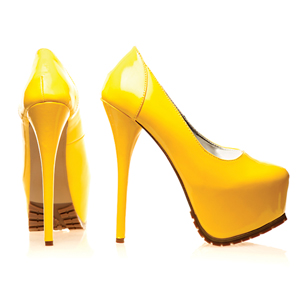 Women visit my office and ask many of the same questions: Why can’t I wear high heels? Why do my feet hurt? And one of the most difficult to discuss: Why are my toes so ugly?
Women visit my office and ask many of the same questions: Why can’t I wear high heels? Why do my feet hurt? And one of the most difficult to discuss: Why are my toes so ugly?
The typical story unfolds. She may have pictured that little black dress with high-heeled strappy sandals, when suddenly she remembered those shoes were out of the question because of an ugly bunion. Or perhaps she remembered the pain from the last span of time wearing those trendy shoes. In the end, she had to table that dress and go with a different outfit and more comfortable shoes – a style that wouldn’t bother her feet or cause ankle pain.
Or maybe she’s one of the luckier ones who is perfectly comfortable wearing high heels for work or an evening out, but when she puts on comfortable shoes for running errands the next day, her feet hurt.
In many cases, problems that prevent women from wearing fashionable shoes are the reason women visit foot doctors. This pain is often caused by hammertoes, bunions, and Morton’s neuromas, all of which are aggravated by an increase in pressure on the ball of the foot when high heels are worn. Unwanted stress or fatigue on the foot or ankle can also result from wearing today’s fashions.
A hammertoe is a condition in which the bones of the second, third, or fourth toe are arched upward, making the toe look something like a hammer. They often occur along with bunions. Treatment to fix this condition may be to simply wear shoes with a wider toe or pad the toe. In some cases, a minimally invasive outpatient procedure may be necessary.
Bunions occur when the big toe points towards the second toe, producing an unsightly bony bump at the edge of the forefoot. Bunions may be associated with abnormal foot structure present at birth, or may be acquired. Wearing shoes that have a narrow toe cannot cause the formation of a bunion, but it can aggravate it, making it nearly intolerable. If you see that you are developing a bunion, try wearing a wider shoe or using foam or felt pads in your shoe.
Morton’s neuromas in the foot are growths or tumors of nerve tissue, with enlargement of a portion of the nerve. Symptoms include pain and numbness, and are often relieved by simply taking off your shoes. Injections are an option for treatment of Morton’s neuromas, as well as foam or fabric pads placed in the shoe. If symptoms do not go away, surgery may be needed. If surgery is indicated, the affected nerve tissue will be removed. Surgery is usually very effective, but the patient may need to limit activities for several weeks.
Many ankle surgeries I perform are done arthroscopically, meaning that very small instruments are used through tiny incisions. Fiber optic technology is used so that even very small structures can be clearly seen on a large video monitor in the operating room. This minimally-invasive technique will make the procedure less traumatic and will improve healing time.
Although we know that many types of shoes are not the easiest on your feet, don’t be so quick to become discouraged, pack your shoes up, and stick them in the attic. Some pain may be decreased with the use of gel inserts or padded insoles. Make sure you get the best fit when you are shopping for your next pair of shoes. Never purchase a pair of shoes thinking the fit will improve with wear or stretch over time. Consider purchasing a shoe with a thicker heel for better stability and to decrease stress on the ball of your foot.
These tips may help you wear the shoes of your choice for your next big night out, but not all shoes are for everyone. Ultimately, it’s a good idea to give your feet and ankles a break and wear comfortable shoes when you can.



